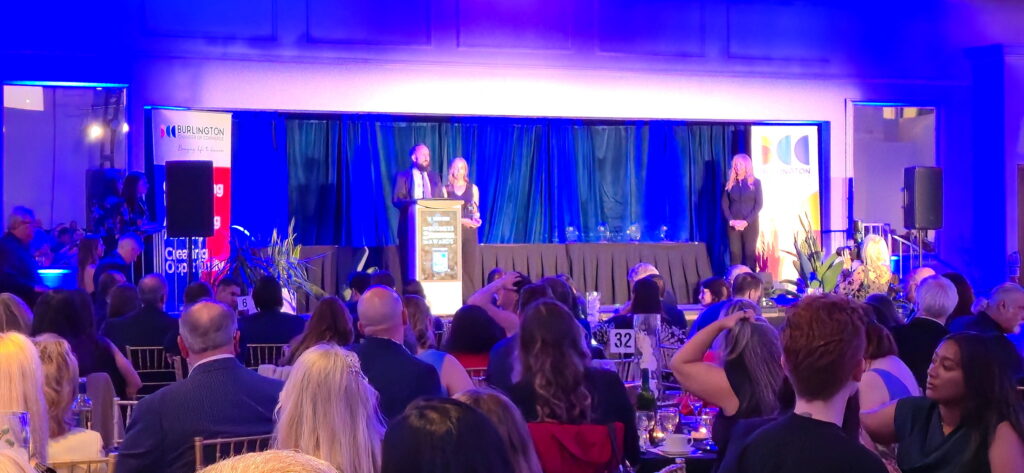A Minute on SR&ED
The Scientific Research and Experimental Development (SR&ED) Tax Incentive Program is a Canadian government initiative designed to encourage businesses to engage in research and development (R&D) activities. This program provides tax credits and refunds to companies that invest in R&D, fostering innovation and competitiveness in the Canadian economy. SR&ED is most often applicable to small businesses in the manufacturing, healthcare, technology, and software industries.
The SR&ED program aims to stimulate innovation by offering financial support to businesses conducting scientific research and experimental development in Canada. This support can significantly reduce the financial risk associated with R&D activities.
The SR&ED Tax Incentive Program is a valuable resource for Canadian businesses investing in R&D. By offering financial incentives, the program encourages innovation and development, ultimately contributing to economic growth and competitiveness in the global marketplace. Companies interested in claiming SR&ED benefits should familiarize themselves with the eligibility criteria and maintain detailed records of their R&D activities to maximize their potential claims.
The program covers various types of R&D activities, including:
- Basic research: Theoretical studies aimed at acquiring new knowledge without a specific application in mind.
- Applied research: Original investigation undertaken to acquire new knowledge with a specific application in view.
- Experimental development: Work undertaken to create new or improved materials, devices, products, or processes.
- Eligibility Criteria: To qualify for the SR&ED tax incentives, companies must demonstrate that their R&D activities:
- Seek to achieve scientific or technological advancement.
- Involve a level of uncertainty that requires systematic investigation.
- Use a scientific or technological approach.
Application Process
When applying, the CRA has two main questions they will ask: Why was the work done? And, how was it carried out?
It is also important to remember that there are some activities that will disqualify you from being eligible for SR&ED, even if they were not the intended purpose. Some of these activities are Market Research, Quality Control, Social Science or Humanities Reaearch, Prospecting, Commerical production or use of new or improved materials and data collection.
There are 3 main stages of the application process:
Documentation – Companies must maintain thorough records of their R&D activities, including project descriptions, expenditures, and supporting documentation. This helps substantiate claims during reviews by the Canada Revenue Agency (CRA).
Filing Claims – Businesses can claim SR&ED tax incentives when filing their income tax returns. They must complete specific forms (e.g., Form T661) to document their R&D activities and expenditures.
Review Process – The CRA reviews claims to ensure that the activities meet the eligibility requirements. Companies may need to provide additional information or clarification during this process.
Understanding and Identifying Potential SR&ED Within Your Business Project
The development of new or improved Products or Processes does not necessarily indicate SR&ED activity.
Novelty, innovation or uniqueness are not sufficient to demonstrate Technological Advancement.
It is important to separate what is considered to be Due Diligence and Standard Practice within your industry from activities aimed at overcoming Technological Obstacles and Uncertainties where the outcome cannot easily be predicted.
Development Based on Standard Practice:
- Standard Practice refers to adapting a known engineering or technological practice to a new situation when there is a high degree of certainty that the known technology or practice will achieve the desired objective.
- The improvement of existing technologies or methodologies using well-established “routine engineering or routine development” would be ineligible if the outcome is predictable.
Development Based on Standard Practice vs SR&ED:
- Project Engineering/Management: The determination and design of a new process alone is not SR&ED
- Application of existing knowledge with minor modifications to optimize response and
- Monitoring of product and process for optimization and adjustments to known parameters are ineligible activities
- SR&ED: Planned systematic experimental work to address specific technological limitations or to advance technology are eligible activities
Due Diligence:
- Use of in-house experience
- Generate and explore concepts
- Reasonable search for information
- Consultations with other producers and suppliers regarding known methodologies
- Educational courses
- Publications and information sources
Is My SR&ED Project Eligible?
If your project centers on developing a new or improved product or process and requires that you go beyond what would be considered “Standard Practice” in your industry, then ask yourself if the following three criteria exist in your related project activities:
Technological Advancement: Are you seeking to do new things, in new ways, or advancing your technological knowledge base to include things that are currently unknown at the onset of your project? If yes, then you can demonstrate “technological advancement”.
Technological Uncertainty: Are the answers to your technological knowledge base unknown in the industry, require a systematic analysis or experimentation to solve these uncertainties? If your project is providing answers to the goals sought, then your project contains the criteria called “technological uncertainty”.
Technological Content: Are you performing a systematic approach, using qualified supervisors and personnel to obtain results and draw conclusions regarding your projects? This satisfies the “technological uncertainties” criteria and provides the necessary “technological content” that answers the third criteria in determining an eligible SR&ED project.
While all three of these criteria form the basis in determining SR&ED eligibility, the subject matter of “Supporting Documentation” or “Evidence in support of your claim” is held in high importance because without documentation and evidence, simply articulating a project’s work content on its own will not carry all of the answers to eligibility.
When Should I Submit My SR&ED claim?
We recommend submitting your SR&ED claim along with your Corporate Tax Returns this means it will be processed in 120 days or less, whereas if it is submitted after your Corporate Tax Return it can take up to 240 days to process.
What can be done to help ensure your SR&ED claim is ready to go with your Corporate Tax Return on time?
- Have tracking systems in place to capture all labour, material and sub-contractor expenditures
- Track expenditures regularly throughout the duration of the project
- Keep all supporting documentation/evidence current and up to date
- Meet with your SR&ED Consultant on regularly scheduled intervals, not just at the end of the fiscal year. SB Partners offers our clients a flexible Project Update Schedule throughout the year at the client’s convenience.
Supporting Documentation
Supporting Documentation is an important part of your SR&ED claim. Without evidence of work performed, the Canada Revenue Agency could deny your project.
Dated documentation should be created from the beginning of the project and continue during the experimental process, not afterwards.
Examples of Technical Documentation are:
- Project planning documents
• Timesheets resource records
• Design of experiments
• Project records, lab notebooks
• Architecture and source code
• Records of trial runs
• Reports and minutes of meetings
• Test protocol, data, results
• Photographs, videos, drawings
• Samples and prototypes
• Contracts
This list is not exhaustive but gives you a good place to start. Remember to document all of the material expenditures for prototypes, samplings, and trial runs in addition to providing supporting evidence, i.e., samples, photos, videos, scrap tickets, etc.
Use templates to track all of your labour/salary, material and sub-contractor expenditures. SB Partners can help you design easy to use templates if you do not have them. Remember, the time to start gathering documentation is at the beginning of the project and continue to completion.
SR&ED and the Medical and Healthcare Industry
No matter what field within the vast medical and healthcare industry you are performing research in, the combined Federal and Provincial government’s Scientific Research & Experimental Development (SR&ED) program can help you fund that research through Investment Tax Credits (ITCs).
Whether you are performing clinical studies or trials, developing new protocols in either basic or applied research, testing or experimenting, or designing and manufacturing new tools, products and processes, you may be able to have your salaries, materials, and outside contractors/consultants’ fees and expenditures partially refunded through these tax credits.
Examples of medical and healthcare industry eligible for SR&ED Tax Credits
- Pharmacy and medicinal chemistry
- Cardiac and cardiovascular systems
- Orthopedics
- Dentistry and oral surgery
- Nutrition and dietetics
- Biomaterials (medical implants, devices)
- Veterinary sciences
- Ophthalmology
Examples of Qualifying Activities
- New procedures/protocols for reduction in pain relief or improvements to patient recovery
- Development of new surgical tools/products/procedures
- Computer software development to enhance existing methodologies
Subsection 2900(1) of the Regulations defines the following categories of scientific research and experimental development that are considered eligible:
- basic research, namely, work undertaken to advance scientific knowledge without a specific practical application in view;
- applied research, namely, work undertaken to advance scientific knowledge with a specific practical application in view;
- experimental development, namely, work undertaken to achieve technological advances for the purpose of creating new, or improving existing, materials, devices, products, or processes, including incremental improvements.
This blog will address the first two categories as to how to describe your research project within the context of the SR&ED program.
The answers should concentrate on the scientific facts and be in the scientific language and style of those who did the actual work.
Use existing materials and documents generated during the course of your research work to complete two sections below.
Describe the scientific knowledge that you were trying to advance.
In responding to this question,
- Describe the scientific knowledge that you gained or were attempting to gain with the work you did;
- Explain why the new knowledge gained as result of your work is an advance relative to the scientific knowledge that was available at the onset of the project, regardless of success or failure; and
- Indicate how the results of your experiments or analysis advanced the understanding of scientific principles, methodologies, or relations.
Reference: Information Circular IC86-4R3
Summarize the work performed in the tax year and explain how that work contributed to the advancement of scientific knowledge.
In responding to this question,
- Describe only the work that was actually carried out during the tax year and for which you are claiming expenditures in the tax year;
- Describe the principles underlying the new concepts that will address the inadequacies of the existing scientific knowledge; and
- Summarize the experiments and/or analysis conducted, including the results obtained, their interpretation, and the conclusions made. Make sure your conclusions relate to the scientific knowledge that you were attempting to gain as stated previously.
Reference: Information Circular IC86-4R3



